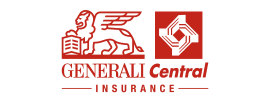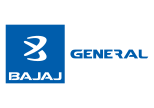Loading In Health Insurance Policies Explained
Loading is the additional premium amount charged by insurance companies on top of the base premium for a policy.
There are usually two ways in which loading is set to work:
- Higher renewal premium amount for existing policyholders, after a claim
- Higher initial premium amount for new high-risk customers
Essentially, the higher the probability of a claim perceived by the Insurance Company, the higher is the premium amount payable by the customer.
Modes in Which Loading is Added in Health Insurance
As mentioned earlier there are two methods of loading in a health insurance policy, namely higher renewal premium and higher initial premium. Let's study them in detail.
1. Higher Renewal Premium
Once a policyholder files a claim, the insurance company may automatically treat this person as high risk due to perceived higher probability for repeat claim against the same disease. While this may be true for certain diseases like cancer, many other critical illnesses might have lower chances of relapse, once treated. Hence, Insurance companies may justifiably explain increasing the renewal premium for the ensuing year based on the logic mentioned above. In contrast, the insured patient undergoing health, emotional, and financial issues may find it inconsiderate.
However, in recent times many insurance providers have discontinued the practice of “claim based loading” by allowing the premium to remain constant for specified periods, irrespective of the claim. In some cases, a waiver of premium (WoP), upon diagnosis of a critical health condition, has been introduced to ease the insured’s financial strain. Additionally, stringent and unambiguous exclusion criteria and waiting periods have been reconstituted by insurers to allow people to understand the coverage and premium responsibilities better, from the proposal stage.
2. Higher Initial Premium
Insurance providers consider certain age groups, gender, health and lifestyle choices, occupation, etc. to be at higher risk. Thus they resort to “underwriting based loading”, in case of fresh policy enrolment, by considering multiple risk factors in the policy proposal and quoting high initial premium amounts based on such risks.
Factors Which Affect Loading in Health Insurance
There are many factors that can lead up to loading via the above two given modes. The factors are listed below:
1. Age Group
Due to rapid lifestyle changes, the incidence of critical illness among people in the age group of 35 – 40 is on the rise. Insurance providers, thus, quote a much higher initial premium for a fresh enrolment at age 35 as compared to that at 25. Following similar reasoning, the initial premium is relatively high for new enrolment for senior citizens as chances of quick health deterioration are relatively high for them.
2. Gender
In some cases, differentiation in premium amounts is made based on gender because of additional childbearing factors in case of females.
3. Health
In recent times, obesity is an essential determiner in premium prices. Other high-risk pre-existing health conditions that often require higher premium are:
- Diabetes
- Hypertension
- High Cholesterol
- Asthma and other chronic conditions
4. Lifestyle Choices
Habitual use of tobacco and alcohol also attracts a higher initial premium as their adverse effect on health has been established for a long time.
5. Occupation
Certain occupations require working in a toxic and hazardous environment, and prolonged exposure increases chances of health hazards, thus justifying higher premiums for people placed in such conditions.
Conclusion
It is essential for a policyholder, or a prospective customer, to carefully examine the terms and conditions in the policy documents and safeguard against an increase in policy premium amount in the future. While Insurance providers continue to improve their product offerings, and legislators constantly endeavour to protect stakeholder interests, consumers are strongly advised to gain a clear understanding of concepts to avoid unpleasant surprises.
Disclaimer: This article is issued in the general public interest and meant for general information purposes only. Readers are advised not to rely on the contents of the article as conclusive in nature and should research further or consult an expert in this regard.




























































